Learning about letters is an exciting adventure for young children. It’s the first step in their journey to becoming proficient readers. Letter recognition and understanding letter names, shapes, and sounds lays a crucial foundation for literacy development.
When kids are around two or three years old, they often start to like letters. They might pretend to read by pointing to letters or making up stories with books. It’s cute to watch and shows they are starting to understand reading.
Whether at home or in the classroom, introducing children to letters can be enjoyable and rewarding. Through engaging activities and playful exploration, children can grasp the fundamentals of the alphabet in a fun and stress-free environment. Join us on this journey together and explore several creative and enjoyable activities to nurture your child’s letter recognition skills.
For toddlers’ learning, many activities help them grow, such as Easter Egg Activities, Daycare Fall Activities For Toddlers, Hopscotch Game, and Toddler Art Projects.
At What Age Should Child Recognize Letters?
The age at which a child should recognize letters can vary as development timelines differ from child to child. However, there are general milestones to consider:
Early Exposure (Birth to 2 years)
Babies benefit from exposure to letters and language through books, toys, and conversation, laying the groundwork for future language development.
Preschool Age (3 to 5 years)
Children typically begin recognizing letters, starting with those in their name, and gradually expanding their knowledge through alphabet books, games, and activities.
Kindergarten Age (5 to 6 years)
By kindergarten, children are expected to recognize most uppercase and lowercase letters and may start understanding letter sounds, which is essential for reading development.
First Grade and Beyond
Throughout elementary school, children further develop letter recognition skills, learning about letter sounds and phonics to read fluently.
Development varies, with some showing early proficiency and others progressing at their own pace.
Why Is Letter Recognition Important?
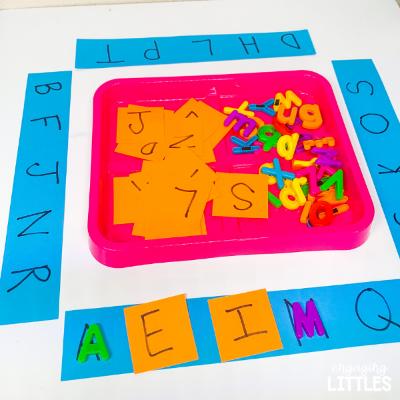
Letter recognition is essential because it lays the groundwork for reading and writing skills. Here’s why it’s important:
Foundation for Literacy – Letter recognition acts as the building block for literacy. Just like a strong tower needs sturdy blocks, children need to recognize letters to develop their reading and writing abilities.
Word Recognition – Knowing letters allows children to recognize and understand words. For instance, if they see the letters “c-a-t,” they can blend them together to read “cat.” This skill enhances reading fluency and comprehension.
Vocabulary Development – Recognizing letters helps children learn new words more easily. As they become proficient in identifying letters, they can recognize and understand a broader range of words in their reading materials.
Spelling Skills – Letter recognition is crucial for spelling. When children can identify letters, they can spell words phonetically by sounding out each letter to write words correctly.
Reading Fluency – Strong letter recognition enables children to read more fluently. They spend less time decoding individual words, allowing them to focus on understanding the text as a whole.
Early Literacy Success – Research suggests that children who enter school with strong letter recognition skills are more likely to succeed in learning to read and write. It sets them up for success in their academic journey.
How To Teach Letter Recognition?
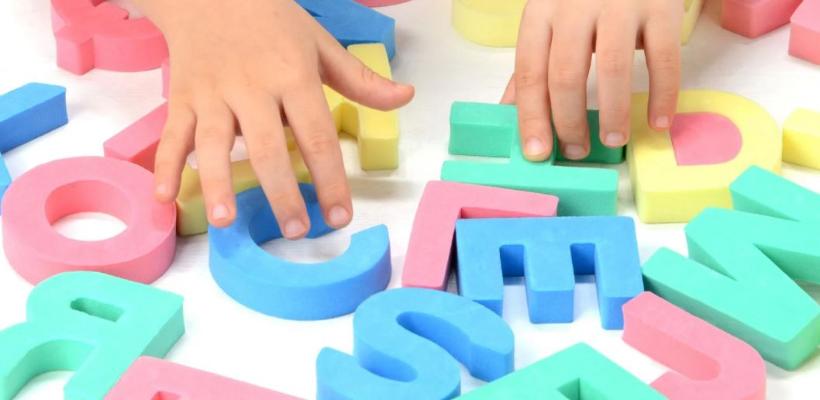
Teaching letter recognition to young children can be an engaging and effective process. Here are detailed strategies to consider:
Letter Sequence
Introduce commonly used letters like those in the child’s name gradually to enhance familiarity and engagement.
Letter Casing
Teach the distinction between capital and lowercase letters, starting with capitals for clarity before introducing lowercase counterparts.
Teach Confusing Letters
Identify and teach letters that may confuse children, reinforcing differences through sorting activities.
Multi-Sensory Approaches
Engage multiple senses for enhanced learning, such as tracing letters, molding them with playdough, or using tactile materials.
Games and Activities
Make letter recognition enjoyable with interactive activities like scavenger hunts, puzzles, and flashcards.
Consistent Practice
Reinforce letter recognition through daily activities, like identifying letters in books or environmental print.
Positive Reinforcement
Praise and celebrate correct letter identification to boost confidence and motivation.
Variety in Instruction
Use diverse methods to cater to different learning preferences, incorporating visual, auditory, and kinesthetic approaches.
Patience and Flexibility
Recognize individual learning paces and adapt teaching strategies accordingly, maintaining patience and flexibility.
Letter Recognition Activities
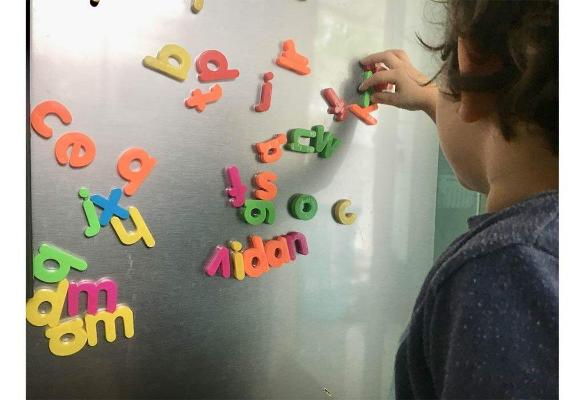
Here are some engaging letter recognition activities for young children:
Alphabet Hunt
Create a scavenger hunt where children search for objects that start with each letter of the alphabet. They can find items around the house, in books, or outside.
Letter Puzzles
Make letter puzzles by cutting out large letters from cardboard or foam board. Have children match lowercase and uppercase letters to complete the puzzles.
Letter Bingo
Create bingo cards with letters instead of numbers. Call out letters, and children mark them on their cards—the first to get a row or column wins.
Letter Sensory Bins
Fill a bin with materials like rice, sand, or small toys. Hide letter cards within the bin, and have children dig through to find and identify the letters.
Letter Sorting
Provide a mix of magnetic letters or letter cards. Have children sort them into groups based on criteria such as uppercase/lowercase, letter shape, or initial letter sound.
Letter Tracing
Give children opportunities to trace letters using their fingers, crayons, or markers. Use large letter cards or write letters on a sensory surface like sand or shaving cream.
Alphabet Books
Read alphabet books together, pointing out and naming each letter as you go. Encourage children to find and identify letters on each page.
Letter Matching Games
Create memory or matching games with pairs of letter cards. Children turn over cards to find matching uppercase and lowercase pairs.
Letter Stamping
Provide letter stamps and ink pads for children to stamp letters onto paper. They can stamp their name, spell simple words, or create alphabet art.
Letter Recognition Games
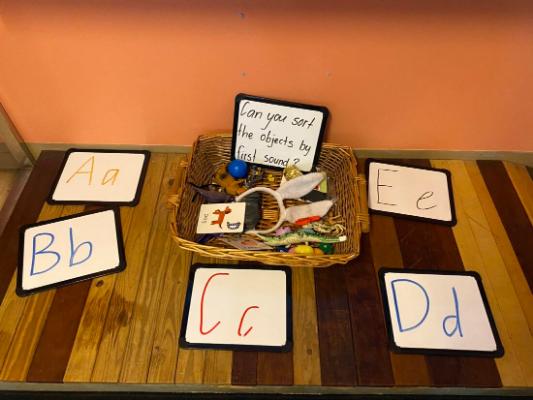
Letter Matching Memory Game
Create a set of matching cards with uppercase and lowercase letters. Place the cards face down and have children take turns flipping two cards at a time to find matching pairs of letters.
Letter Hopscotch
Draw a hopscotch grid on the ground or use masking tape indoors. Write letters in each square. Call out a letter, and children have to hop to the square with that letter while saying its name.
Letter Race Relay
Divide children into teams and place sets of alphabet cards at the opposite ends of the room. Call out a letter, and one child from each team races to find and grab the corresponding letter card. The team that collects all the letters first wins.
Letter Fishing
Create fish-shaped cards with letters written on them and place them in a “fishing pond” (a large container filled with water). Children use a toy fishing rod with a magnet to “catch” fish. When they catch a fish, they identify the letter on it.
Letter Dominoes
Make dominoes by writing letters on rectangular pieces of cardstock. Players take turns matching letters to create a chain of connected dominoes. For example, if one domino has an “A” on one end, the next domino must have a letter that starts with “A” on one end.
Letter Recognition Activities For Preschoolers
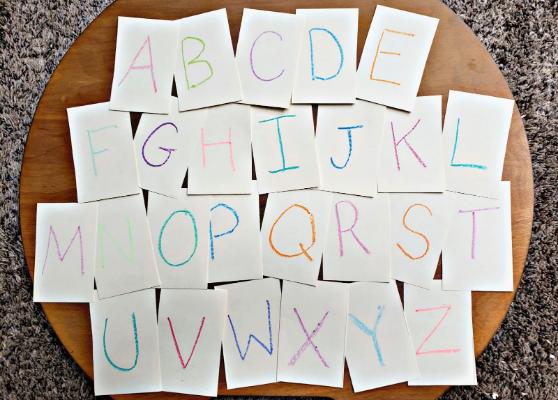
Letter Sound Boxes
Preschoolers match objects/pictures to labeled boxes based on the initial letter sound.
Letter Collage
Preschoolers create a collage by cutting out and pasting letters found in magazines or newspapers.
Letter Treasure Hunt
Preschoolers search for hidden letters, collecting them as they find each one.
Alphabet Bean Bag Toss
Preschoolers toss bean bags onto a target labeled with letters, naming the letter where the bean bag lands.
Letter Bingo Dabber Art
Preschoolers dab bingo cards with letters called out, creating colorful art designs as they play.
Fun Ways To Teach Letter Recognition
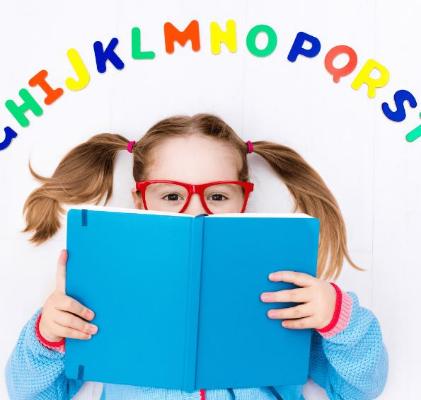
Here are five fun ways to teach letter recognition:
Letter Rainbow
Use colored pencils or markers to write letters on strips of paper; each strip a different color. Have children arrange the strips to form a rainbow, saying the letters as they assemble it.
Letter Treasure Map
Create a “treasure map” with a path of letters leading to a hidden treasure (a toy or treat). Children follow the path by identifying and stepping on each letter along the way.
Letter Balloon Pop
Write letters on balloons and scatter them around the room. As children find each balloon, they must pop it and identify the letter written on it before moving on to the next one.
Letter Freeze Dance
Play music and have children dance around the room. When the music stops, they call out a letter, and the children freeze and find that letter somewhere in the room.
Letter Relay Drawing
Divide children into teams and give each team a large piece of paper and a marker. Call out a letter, and one child from each team races to draw an object that starts with that letter. The team with the most creative drawings wins.
Letter Identification Games
Letter Bingo
Children mark letters on cards as letters are called out, aiming to complete a row or column.
Letter Scavenger Hunt
Children search for hidden letters, identifying and collecting them as they find each one.
Letter Memory Match
Players flip cards to find matching pairs of uppercase and lowercase letters.
Alphabet Relay Race
Teams race to find and collect alphabet cards called out, aiming to gather all letters first.
Letter Twister
Players place hands or feet on letter-labeled circles, called out randomly, to maintain balance.
Wrap Up
To sum up, helping kids recognize letters early on is really important for them to learn to read and write well later. By making learning letters fun and exciting, we can give kids a great start on their journey to becoming strong readers and writers. With a little patience and creativity, we can help them discover the magic of letters and open up a whole new world of learning and adventure.
